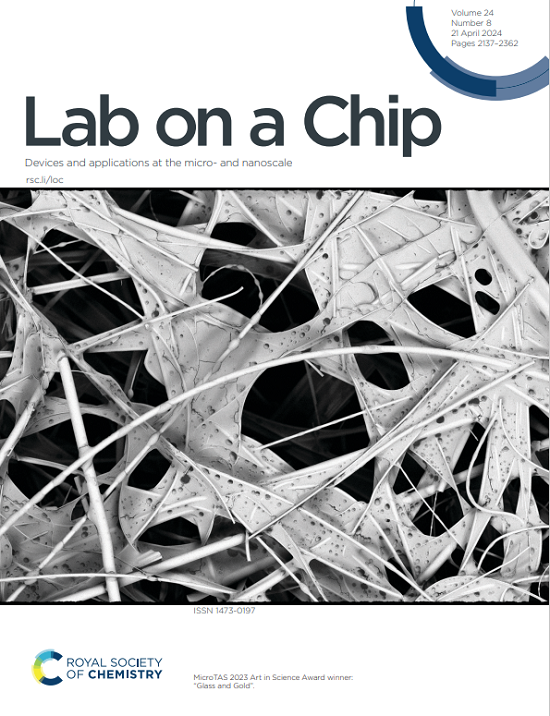Dual lateral flow assay using quantum nanobeads for quantitative detection of BDNF and TNF-α in tears.
IF 6.1
2区 工程技术
Q1 BIOCHEMICAL RESEARCH METHODS
引用次数: 0
Abstract
Glaucoma is a group of neurodegenerative eye diseases characterized by progressive damage to the optic nerve which is typically asymptomatic until irreversible vision loss has occurred. Early screening is essential for timely treatment to prevent visual impairment. However, existing detection methods struggle to achieve a balance between accuracy, time efficiency, and portability. The lateral flow assay (LFA) is a well-established immunoanalytical tool for point-of-care (POC) analysis. Here, we have developed a unique dual-testing, quantum nanobeads-based fluorescence LFA, allowing for the simultaneous and quantitative detection of two glaucoma biomarkers: tumor necrosis factor-α (TNF-α) and brain-derived neurotrophic factor (BDNF). By coating quantum dots on the surface of a SiO2 core, the fluorescent intensity of the quantum nanobeads was enhanced enabling an accurate, efficient, and high-throughput bioanalytical performance, with low detection limits of 3.39 pg mL-1 for TNF-α and 4.13 pg mL-1 for BDNF. The LFA also demonstrated superior selectivity, reproducibility, and stability to the standard enzyme-linked immunosorbent assay (ELISA). Using a 3D-printed readout box, the analysis of the LFA requires only a readily accessible smartphone and image processing software, making it an ideal POC detection tool. This ultrasensitive, economical, and user-friendly LFA demonstrates significant potential as an alternative for glaucoma screening.量子纳米珠双侧流法定量检测泪液中BDNF和TNF-α。
青光眼是一组以视神经进行性损害为特征的神经退行性眼病,通常无症状,直到发生不可逆的视力丧失。早期筛查对于及时治疗以预防视力损害至关重要。然而,现有的检测方法难以在准确性、时间效率和便携性之间取得平衡。横向流动试验(LFA)是一种完善的免疫分析工具,用于即时(POC)分析。在这里,我们开发了一种独特的双测试,基于量子纳米珠的荧光LFA,允许同时和定量检测两种青光眼生物标志物:肿瘤坏死因子-α (TNF-α)和脑源性神经营养因子(BDNF)。通过在SiO2核表面涂覆量子点,增强了量子纳米珠的荧光强度,实现了准确、高效和高通量的生物分析性能,对TNF-α和BDNF的检出限分别为3.39 pg mL-1和4.13 pg mL-1。与标准酶联免疫吸附试验(ELISA)相比,LFA也表现出优越的选择性、重复性和稳定性。使用3d打印读出盒,LFA分析只需要一个易于访问的智能手机和图像处理软件,使其成为理想的POC检测工具。这种超灵敏、经济、用户友好的LFA显示出作为青光眼筛查替代方案的巨大潜力。
本文章由计算机程序翻译,如有差异,请以英文原文为准。
求助全文
约1分钟内获得全文
求助全文
来源期刊

Lab on a Chip
工程技术-化学综合
CiteScore
11.10
自引率
8.20%
发文量
434
审稿时长
2.6 months
期刊介绍:
Lab on a Chip is the premiere journal that publishes cutting-edge research in the field of miniaturization. By their very nature, microfluidic/nanofluidic/miniaturized systems are at the intersection of disciplines, spanning fundamental research to high-end application, which is reflected by the broad readership of the journal. Lab on a Chip publishes two types of papers on original research: full-length research papers and communications. Papers should demonstrate innovations, which can come from technical advancements or applications addressing pressing needs in globally important areas. The journal also publishes Comments, Reviews, and Perspectives.
 求助内容:
求助内容: 应助结果提醒方式:
应助结果提醒方式:


